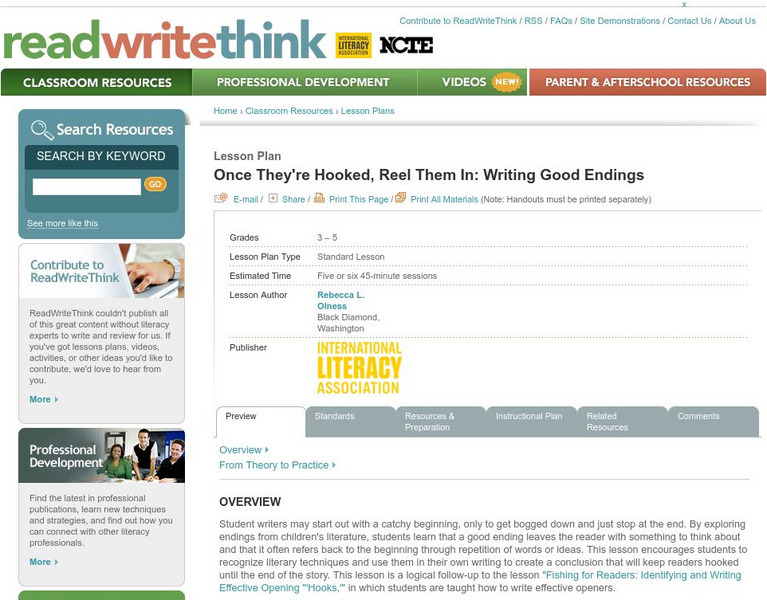Hi, what do you want to do?
Curated OER
Harmony and Expression in Writing Form
How do you write an interesting beginning, middle, and end of a story? With this activity, young writers look to other stories as examples. Then, they use some of the attached graphic organizers to help them create their own story. Note:...
Curated OER
Add -ed to Words
What a simple and easy way to review adding the -ed ending to words. This resource lists the rules for adding -ed to words, and provides a variety of examples to make this concept easy to understand. This would be a useful tool to use in...
Curated OER
Lesson 3: Predicting Beyond the Text
Second graders make predictions beyond the text. In this prediction lesson, 2nd graders read a story and predict what happens to the characters after the story is over by using evidence from what they read. They read three different...
Curated OER
Finding Muffin
In this conclusion worksheet, students read the story about Muffin, the missing dog, and then finish it by writing their own ending.
Curated OER
The Baseball Game
In this conclusion worksheet, students read the story about first baseball game and finish the story by writing their own ending.
Curated OER
New Endings
Second graders listen to the story of The Three Little Pigs in an urban setting. They then divide into small groups and using one story per group, read the story in 15 minutes and come up with a new ending and practice for an additional...
Curated OER
The 3 Little Pigs
Second graders create new endings to The Three Little Pigs. They read and discuss The True Story of the Three Little Pigs and compare it to the original version. After comparing the two versions, they write a friendly letter to the wolf...
Curated OER
Is There Room on the Bus?
Students explore beginning, middle, and end by listening to a story and completing a worksheet. They retell the story referring to the sequencing of events.
ReadWriteThink
Read Write Think: Writing Good Endings
This lesson plan explores endings and conclusions to children's literature in an attempt to teach how to successfully write a good ending. Included in the lesson plan are an overview, practice, objectives, resources, preparation, and more.
Academy of American Poets
Poets.org: "Endings" by Mona Van Duyn
Contains an audio recording and text of the poem "Endings" by Mona Van Duyn provided by the Academy of American Poets.
ClassFlow
Class Flow: Spelling Change Add Y
[Free Registration/Login Required] How words change when Y is added.
ClassFlow
Class Flow: Verb Endings
[Free Registration/Login Required] Students will learn to spell regular verb endings s, ed, ing (link to grammar work on tenses).
ClassFlow
Class Flow: Changing Words
[Free Registration/Login Required] This flipchart will help students to understand that some words can be changed in particular ways and others cannot, e.g. changing verb endings, adding comparative endings, pluralization, and that these...
ClassFlow
Class Flow: Inflected Endings
[Free Registration/Login Required] This flipchart is designed for students to practice adding -s, -ed, and -ing to words.
ClassFlow
Class Flow: Magic Words
[Free Registration/Login Required] Some ideas of how to use the tools within Activprimary. This is one of the flipcharts which is included as part of the software and can be found in the shared Literacy folder in flipcharts
Quizlet
Quizlet: Grade 5 El Al Le Spelling
Use these fourteen interactive flash cards to practice common spelling words that contain the ending el, al, and le.




















